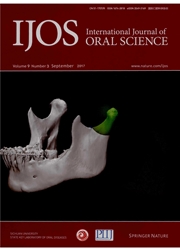

 中文摘要:
中文摘要:
Orthodontic pain is an inflammatory pain that is initiated by orthodontic force-induced vascular occlusion followed by a cascade of inflammatory responses, including vascular changes, the recruitment of inflammatory and immune cells, and the release of neurogenic and pro-inflammatory mediators. Ultimately, endogenous analgesic mechanisms check the inflammatory response and the sensation of pain subsides. The orthodontic pain signal, once received by periodontal sensory endings, reaches the sensory cortex for pain perception through three-order neurons: the trigeminal neuron at the trigeminal ganglia, the trigeminal nucleus caudalis at the medulla oblongata and the ventroposterior nucleus at the thalamus. Many brain areas participate in the emotion,cognition and memory of orthodontic pain, including the insular cortex, amygdala, hippocampus, locus coeruleus and hypothalamus. A built-in analgesic neural pathway—periaqueductal grey and dorsal raphe—has an important role in alleviating orthodontic pain. Currently, several treatment modalities have been applied for the relief of orthodontic pain, including pharmacological, mechanical and behavioural approaches and low-level laser therapy. The effectiveness of nonsteroidal antiinflammatory drugs for pain relief has been validated, but its effects on tooth movement are controversial. However, more studies are needed to verify the effectiveness of other modalities. Furthermore, gene therapy is a novel, viable and promising modality for alleviating orthodontic pain in the future.
 英文摘要:
英文摘要:
Orthodontic pain is an inflammatory pain that is initiated by orthodontic force-induced vascular occlusion followed by a cascade of inflammatory responses, including vascular changes, the recruitment of inflammatory and immune cells, and the release of neurogenic and pro-inflammatory mediators. Ultimately, endogenous analgesic mechanisms check the inflammatory response and the sensation of pain subsides. The orthodontic pain signal, once received by periodontal sensory endings, reaches the sensory cortex for pain perception through three-order neurons: the trigeminal neuron at the trigeminal ganglia, the trigeminal nucleus caudalis at the medulla oblongata and the ventroposterior nucleus at the thalamus. Many brain areas participate in the emotion, cognition and memory of orthodontic pain, including the insular cortex, amygdala, hippocampus, locus coeruleus and hypothalamus. A built-in analgesic neural pathway--periaqueductal grey and dorsal raphe---has an important role in alleviating orthodontic pain. Currently, several treatment modalities have been applied for the relief of orthodontic pain, including pharmacological, mechanical and behavioural approaches and low-level laser therapy. The effectiveness of nonsteroidal anti- inflammatory drugs for pain relief has been validated, but its effects on tooth movement are controversial. However, more studies are needed to verify the effectiveness of other modalities. Furthermore, gene therapy is a novel, viable and promising modality for alleviatin~ orthodontic oain in the future.
 同期刊论文项目
同期刊论文项目
 同项目期刊论文
同项目期刊论文
 期刊信息
期刊信息
